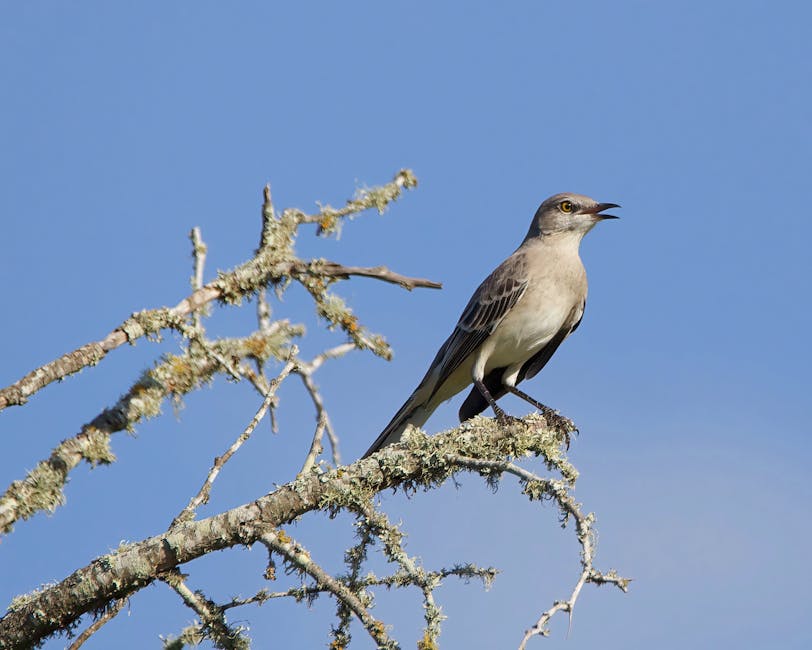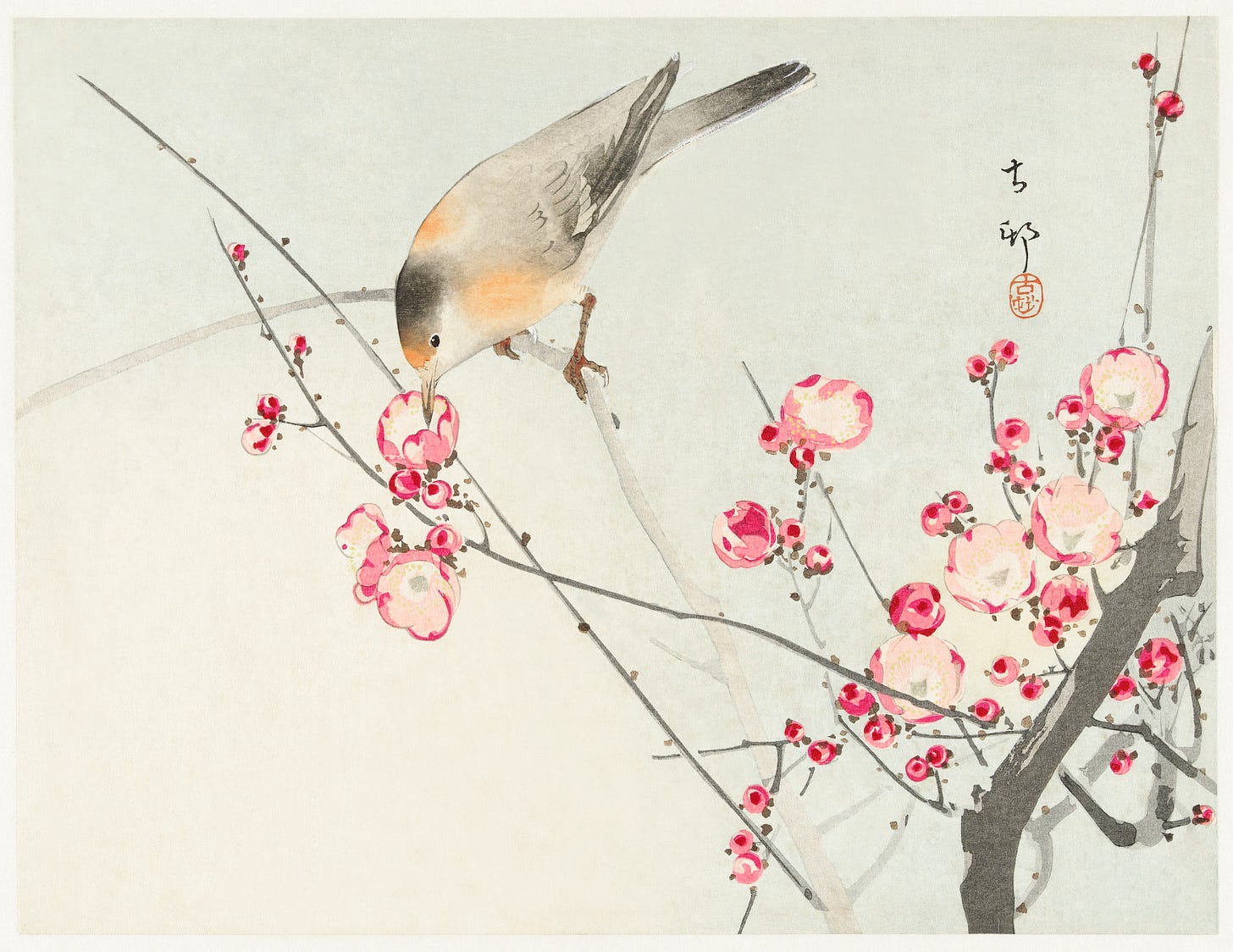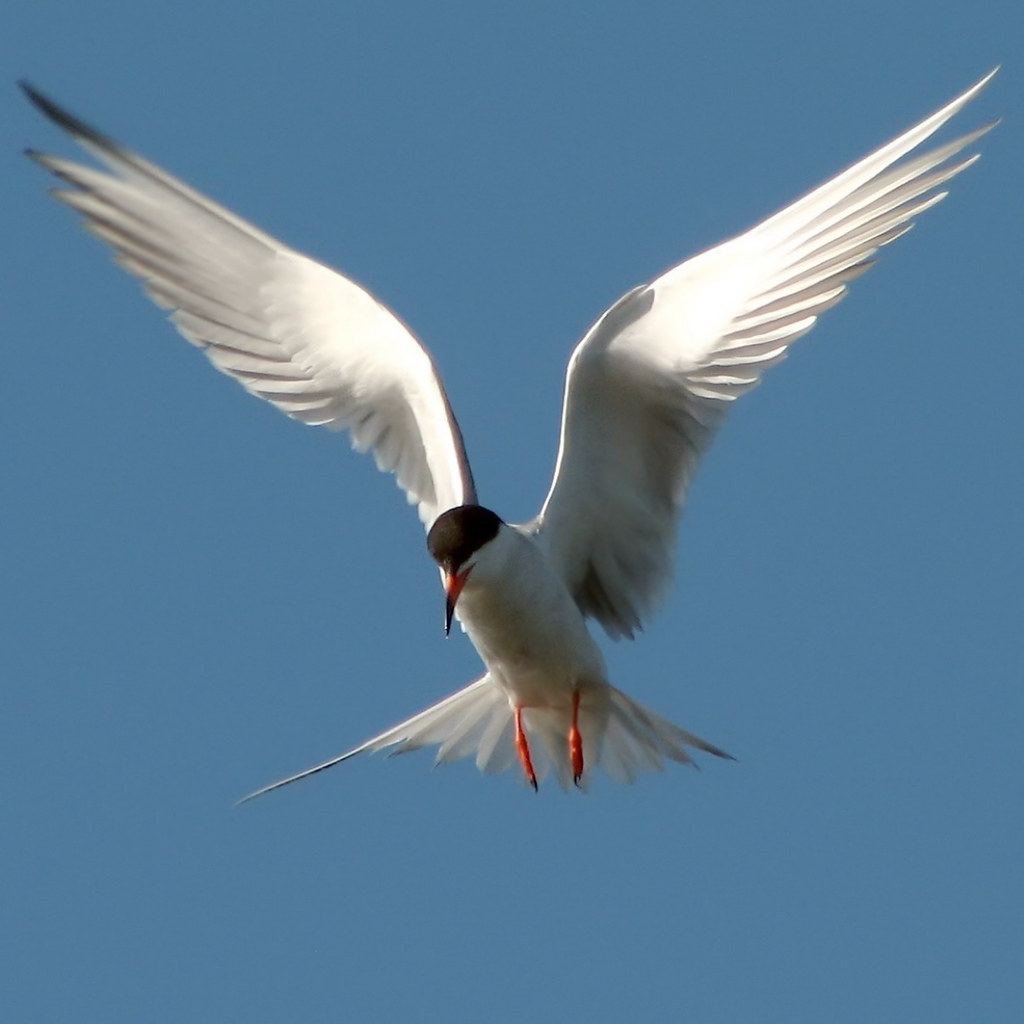Introduction: The Captivating World of Windhovers

Birds have fascinated and inspired humans for centuries with their diverse forms, colors, and behaviors. Among these avian wonders are windhovers, a group of birds known for their exceptional aerial hunting abilities and captivating flight patterns. In this article, we delve into the world of windhovers, exploring their identification, habitat, behavior, diet, and the significance of their presence in our environment.
A windhover, also known as a Eurasian kestrel (Falco tinnunculus), is a small to medium-sized bird of prey prevalent in Europe, Asia, and North Africa. Its name originates from its remarkable ability to hover in mid-air, using its wings to maintain a stationary position while scanning the ground for prey. This hovering behavior provides the windhover with a clear view of its surroundings, allowing it to spot potential prey with precision.
Understanding windhovers sheds light on the remarkable adaptations and skills that birds have evolved to survive in their environments. By exploring the characteristics and behavior of windhovers, we gain a deeper appreciation for the intricate web of life and the diverse strategies employed by different bird species.
In the following sections, we will explore various facets of the windhover’s life. We will start by discussing their physical identification, including size, coloration, and distinctive markings. Then, we will delve into their preferred habitats and range, providing insight into their distribution. Additionally, we will examine their behaviors, such as nesting, flight patterns, and courtship rituals.
Furthermore, we will uncover their dietary preferences, examining the types of food they consume and the strategies they employ to obtain their meals. Through this exploration, we will gain a comprehensive understanding of the ecological role windhovers play in their ecosystems, particularly in pest control and pollination. Moreover, we will explore ongoing conservation efforts aimed at safeguarding these remarkable birds and their habitats.
Join us on this journey into the mesmerizing world of windhovers as we unravel the secrets of their existence and the significance they hold within the natural tapestry of life. Through this exploration, we hope to foster a greater appreciation for the wonders of avian diversity and the delicate balance of our shared planet.
Identification of the Windhover

The windhover, commonly known as the kestrel (Falco tinnunculus), possesses distinct physical characteristics that aid in its identification.
Size and Shape
The kestrel is a small to medium-sized bird of prey, measuring approximately 9-13 inches (23-33 cm) in length with a wingspan of around 20-24 inches (51-61 cm). Its compact and slim build allows for notable agility in flight, with pointed wings and a slightly swept-back shape that enables precise maneuvering.
Coloration and Markings
Sexual dimorphism is prevalent in the kestrel, resulting in different color patterns between males and females.
- Males: Rusty reddish-brown back, pale underparts with dark spots, grayish head, bluish-gray tail with a distinct black band near the end.
- Females: Brown back patterned with dark barring, pale head, rufous-hued tail with dark bars.
Facial Features

Both males and females possess a distinguishing facial pattern. They have a pale face adorned with a dark eye stripe that extends from the eye towards the back of the head.
Flight Behavior

The kestrel’s flight behavior is a notable characteristic, setting it apart from other birds of prey. It is renowned for its ability to hover in mid-air, scanning the ground for potential prey. This hovering behavior gives rise to the term “windhover.”
Understanding the physical characteristics of windhovers, including size, coloration, markings, facial features, and flight behavior, is crucial for accurate identification in the field. In the following sections, we will delve deeper into their habitat, behavior, diet, and the importance of their conservation.
The Habitat of the Windhover: Exploring Range and Preferred Habitats

The windhover, also known as the common kestrel (Falco tinnunculus), thrives across Europe, Asia, and Africa, showcasing its adaptability to diverse environments. While it can be found in various habitats, the windhover exhibits a preference for specific areas that cater to its hunting and nesting requirements.
Range
The common kestrel’s range extends across Europe, Asia, and Africa, from northern Europe, including Scandinavia and the British Isles, to the Mediterranean countries and the Middle East. This versatile bird adapts to different climates and landscapes throughout its extensive distribution.
Preferred Habitats

The windhover demonstrates its adaptability in a range of habitats, but it primarily favors open areas with a mix of grasslands, farmlands, heathlands, and wetlands.
Grasslands
Expansive grassy habitats, such as meadows, fields, and pastures, provide ideal hunting grounds for the windhover. Its exceptional hovering ability allows it to scan the grassland beneath for movement, making it a formidable predator in these habitats.
Farmlands
The windhover frequents agricultural areas encompassing crop fields and orchards. The presence of rodents and insects in these environments attracts the bird, utilizing these resources for sustenance. Its ability to hover and stoop swiftly enables efficient hunting amidst cultivated landscapes.
Heathlands
Heathlands, characterized by open, low-lying vegetation and shrubs, serve as favored habitats for windhovers. These areas offer suitable perching spots for the bird to survey its surroundings and identify potential prey. The mix of grasses, shrubs, and scattered trees provides an ideal hunting environment.
Wetlands
Some windhovers can be found in wetland habitats, including marshes, swamps, and riverbanks. Wetlands provide a diverse range of prey options, such as amphibians, small fish, and insects. These habitats offer opportunities for both aerial hunting and perching near water bodies to catch unsuspecting prey.
In conclusion, the windhover, or common kestrel, demonstrates adaptability across its range in Europe, Asia, and Africa. While it can be found in various habitats, it exhibits a preference for open areas like grasslands, farmlands, heathlands, and wetlands. Understanding the windhover’s habitat preferences sheds light on its ecological role and highlights the importance of conserving these diverse environments.
The Behavior of the Windhover: Nesting, Flight, and Courtship

The windhover, or Eurasian kestrel (Falco tinnunculus), exhibits fascinating behaviors that are essential to understanding this bird species. From nesting to flight and courtship, the windhover’s behaviors showcase its adaptability and survival strategies.
Nesting
Windhovers typically select nesting sites in tree holes, crevices, or make use of abandoned nests of other birds, such as crows or magpies. They also utilize man-made structures like buildings and nest boxes. The female windhover takes the lead in choosing the nest site and constructs a simple nest using twigs, grass, feathers, and other available materials. Interestingly, windhovers often exhibit nest site fidelity, returning to the same nest site year after year.
Flight
Renowned for their exceptional hovering ability, windhovers are skilled at scanning the ground for prey while hovering in mid-air. Their flight pattern is distinct, characterized by rapid wing beats interspersed with short glides. This agile and maneuverable flight enables windhovers to change direction swiftly and perform acrobatic aerial displays. Their ability to hover is particularly useful for hunting, allowing them to maintain a precise position while searching for prey.
Courtship
During the breeding season, windhovers engage in courtship displays to attract mates. These displays often involve aerial acrobatics, with the male demonstrating its flying prowess through impressive dives, climbs, and twists. The male may also perform a “sky dance,” soaring high into the air and then descending in a series of steep dives. These displays not only showcase the male’s fitness but also serve to impress and court the female. Once the pair bond is established, windhovers are generally monogamous for the breeding season.
Understanding the behaviors of windhovers provides valuable insights into their lifestyle and survival strategies. From their nesting choices and construction to their exceptional hovering flight and elaborate courtship displays, these behaviors highlight the remarkable nature of these birds. The next section will delve into the windhover‘s diet, shedding light on their feeding habits and the role they play in the ecosystem.
The Diet of the Windhover: A Diverse and Adaptable Predator

The windhover, also known as the common kestrel (Falco tinnunculus), is an opportunistic predator with a diverse and adaptable diet. Its ability to thrive in various habitats is attributed to its varied food sources.
Varied Prey
The windhover’s diet consists of small mammals, birds, and insects, ensuring a consistent supply of nourishment. By diversifying its food sources, the windhover exhibits remarkable adaptability, enabling it to survive in different environments and seasons.
Small Mammals: Swift and Precise Strikes
A significant portion of the windhover’s diet comprises small mammals such as voles, shrews, mice, and occasionally young rabbits. With exceptional hunting technique, the windhover hovers in mid-air, intently scanning the ground for any signs of movement. Once prey is detected, it swiftly swoops down to snatch it, displaying remarkable precision and agility.
Birds: Pursuing Avian Prey
Although birds constitute a smaller portion of its diet, the windhover does prey on small avian species such as sparrows, finches, and larks. With its agile flight abilities, the windhover can pursue its avian prey both in the air and on the ground, showcasing its versatility as a predator.
Insects: Crucial for Survival
Insects play a vital role in the windhover’s diet, particularly during the breeding season. The bird feeds on a wide array of insects, including beetles, grasshoppers, dragonflies, and small reptiles like lizards. This dietary flexibility is crucial for sustaining the windhover when small mammals or birds are scarce, highlighting its ability to adapt to changing food availability.
Hunting Techniques: Mastering the Art of Capture
The windhover employs a combination of hovering, perching, and soaring techniques to secure its prey. Hovering in mid-air allows it to observe the ground for potential targets, while perching on elevated vantage points provides an advantageous perspective for locating prey. In addition, the windhover utilizes its swift flight to pursue and capture prey both in flight and on the ground. Its mastery of these techniques showcases the bird’s remarkable hunting prowess.
Understanding the windhover’s dietary preferences and hunting techniques provides insight into its role as a predator within its ecosystem. By adapting to various food sources, the windhover ensures its survival and influences the population dynamics of its prey.
The Benefits of Having Windhovers Around: Guardians of Ecosystem Balance

Windhovers, also known as kestrels or hovering birds of prey, play a crucial role in maintaining the balance of ecosystems. These remarkable birds offer several benefits to the environment, including pest control and unintentional contributions to pollination.
Pest Control: Natural Predators at Work
One major benefit of having windhovers around is their effectiveness in controlling pest populations. They primarily feed on small mammals like mice, voles, and shrews, as well as insects such as grasshoppers, beetles, and cicadas. By preying on these pests, windhovers help to reduce their numbers, which can prevent agricultural damage and the spread of diseases carried by rodents and insects. Windhovers‘ hunting behavior also contributes to the ecological balance by controlling rodent populations, mitigating issues such as crop damage and the need for chemical pesticides.
Unintentional Pollination: Nature’s Accidental Helpers
Additionally, windhovers have a secondary positive impact on pollination. While they are not primary pollinators like bees or hummingbirds, they inadvertently contribute to the process. Windhovers perch on high vantage points, such as trees or utility poles, where they scan the surroundings for prey. During this time, they may unintentionally pick up pollen grains on their feathers or feet from flowers they come into contact with. As they move between perches, they can potentially transfer some pollen, aiding in cross-pollination. Although their contribution to pollination is secondary, it still adds to the overall biodiversity and resilience of ecosystems.
Environmental Indicators: Sentinels of Ecosystem Health
Windhovers also serve as indicators of environmental health. As predators high up in the food chain, they are sensitive to changes in the ecosystem. Declines in windhover populations or their absence from certain areas can signal ecological imbalances. Monitoring windhover populations can provide valuable insights into the overall health of an ecosystem and help identify potential threats or environmental changes that need attention.
In conclusion, windhovers offer numerous benefits to the environment. Through their role in pest control, windhovers help reduce agricultural damage and limit the spread of diseases carried by rodents and insects. Their unintentional contribution to pollination adds to the biodiversity of ecosystems. Moreover, as environmental indicators, windhovers provide valuable insights into the overall health of ecosystems. Protecting and conserving windhovers is crucial for maintaining the delicate balance of our natural world.
Conservation Efforts for the Windhover: Protecting and Preserving a Precious Species

The windhover, also known as the kestrel or European kestrel (Falco tinnunculus), is a small bird of prey that plays a vital role in ecosystems across various regions. Recognizing the importance of conserving this remarkable species, measures have been implemented to protect and preserve the windhover and its habitat.
Habitat Protection: Preserving the Home of the Windhover

Efforts are underway to safeguard the natural environments where windhovers thrive, ensuring suitable nesting sites and abundant foraging areas. Preserving open grasslands, meadows, agricultural lands, and wetlands is a primary focus, as these serve as preferred habitats for windhovers.
Conservation Programs: Collaborating for a Common Goal
Numerous organizations and conservation groups are actively engaged in implementing programs dedicated to the protection of the windhover and its habitat. Collaboration between researchers, government agencies, and local communities is a common approach in these programs, combining expertise and resources for more effective results.
Research and Monitoring: Gathering Insights for Conservation Planning
Extensive research initiatives focus on studying the behavior, population dynamics, and migration patterns of windhovers, providing valuable insights for conservation strategies. Monitoring programs track windhover numbers and distribution, enabling informed decisions and prioritized conservation actions.
Protection from Threats: Safeguarding the Windhover’s Future
The windhover faces threats including habitat loss due to urbanization, agricultural intensification, climate change, and pesticide use. Conservation efforts focus on minimizing habitat fragmentation, promoting sustainable agricultural practices, and raising awareness to reduce threats. Fostering a sense of responsibility among individuals encourages actions that support the species’ well-being.
In conclusion, windhovers are critical for maintaining ecological balance. Through habitat protection, conservation programs, research and monitoring, and protection from threats, efforts are made to safeguard these remarkable birds. By working together and taking proactive measures, we ensure the presence of windhovers in our natural landscapes, benefiting both the species and the ecosystems they inhabit.
Conclusion

Windhovers are fascinating birds that possess unique characteristics and play a significant role in the environment. Throughout this blog post, we have explored various aspects of windhovers, including their identification, habitat, behavior, diet, benefits, and conservation efforts.
Windhovers captivate with their physical attributes, such as size, coloration, and distinctive markings. They are known for their ability to hover while hunting, showcasing remarkable agility and keen eyesight.
Beyond physical prowess, windhovers hold cultural and historical significance, symbolizing grace, freedom, and swiftness. They can be found in diverse habitats and contribute to pest control and pollination.
However, windhovers face conservation challenges due to habitat loss, pesticide exposure, and human disturbances. Efforts are underway to protect their habitats, raise awareness, and secure a future for windhovers.
Understanding and appreciating windhovers and their ecological significance is crucial for maintaining a balanced and sustainable environment. By preserving habitats, promoting responsible land management, and supporting conservation programs, we contribute to the protection of these magnificent birds and the ecosystems they inhabit.
Let us be inspired to cherish and protect the natural world around us. Every effort, big or small, makes a difference in preserving the diverse avian species that enrich our planet’s biodiversity and bring wonder to our lives.
Frequently Asked Questions
What bird is referred to as a “windhover” in some areas?
The bird referred to as a “windhover” in some areas is the Eurasian kestrel (Falco tinnunculus).
What are the physical characteristics of a windhover?
Windhovers, or Eurasian kestrels, are small to medium-sized birds of prey. They have a compact and slim build, measuring approximately 9-13 inches (23-33 cm) in length with a wingspan of around 20-24 inches (51-61 cm). Males have a rusty reddish-brown back, pale underparts with dark spots, a grayish head, and a bluish-gray tail with a distinct black band near the end. Females have a brown back patterned with dark barring, a pale head, and a rufous-hued tail with dark bars.
Where can windhovers be found?

Windhovers, or Eurasian kestrels, can be found in Europe, Asia, and North Africa. Their range extends from northern Europe, including Scandinavia and the British Isles, to the Mediterranean countries and the Middle East.
What habitats do windhovers prefer?

Windhovers, or Eurasian kestrels, prefer open areas with a mix of grasslands, farmlands, heathlands, and wetlands. They can be found in habitats such as meadows, fields, pastures, crop fields, orchards, heathlands with low-lying vegetation and shrubs, as well as wetlands like marshes, swamps, and riverbanks.
What is the ecological role of windhovers?
Windhovers, or Eurasian kestrels, play an important ecological role. They contribute to pest control by feeding on small mammals like mice and voles, as well as insects such as grasshoppers and beetles, helping to reduce their populations and prevent agricultural damage. Windhovers also

Leave a Reply